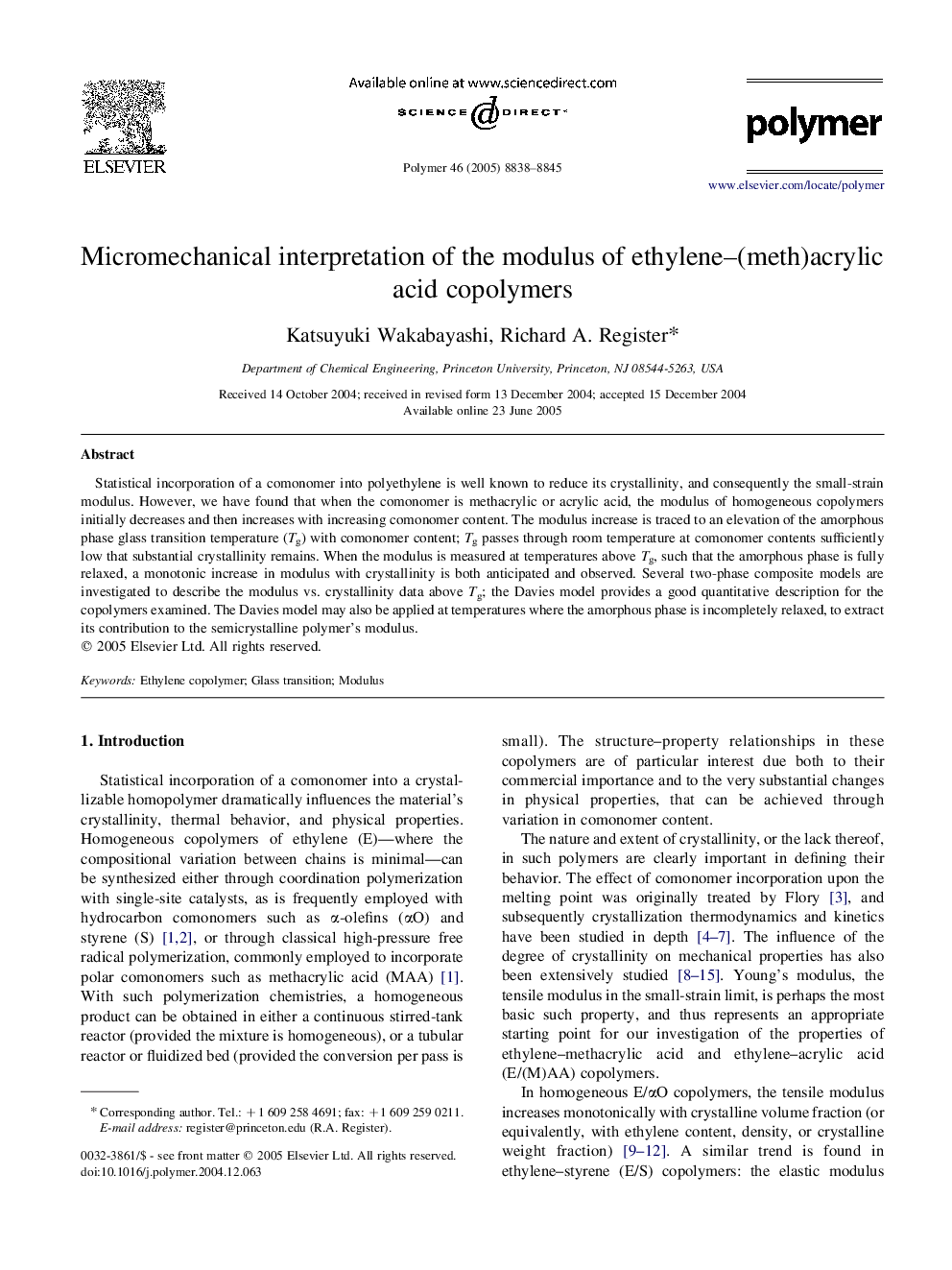| Article ID | Journal | Published Year | Pages | File Type |
|---|---|---|---|---|
| 5190573 | Polymer | 2005 | 8 Pages |
Abstract
Statistical incorporation of a comonomer into polyethylene is well known to reduce its crystallinity, and consequently the small-strain modulus. However, we have found that when the comonomer is methacrylic or acrylic acid, the modulus of homogeneous copolymers initially decreases and then increases with increasing comonomer content. The modulus increase is traced to an elevation of the amorphous phase glass transition temperature (Tg) with comonomer content; Tg passes through room temperature at comonomer contents sufficiently low that substantial crystallinity remains. When the modulus is measured at temperatures above Tg, such that the amorphous phase is fully relaxed, a monotonic increase in modulus with crystallinity is both anticipated and observed. Several two-phase composite models are investigated to describe the modulus vs. crystallinity data above Tg; the Davies model provides a good quantitative description for the copolymers examined. The Davies model may also be applied at temperatures where the amorphous phase is incompletely relaxed, to extract its contribution to the semicrystalline polymer's modulus.
Related Topics
Physical Sciences and Engineering
Chemistry
Organic Chemistry
Authors
Katsuyuki Wakabayashi, Richard A. Register,
